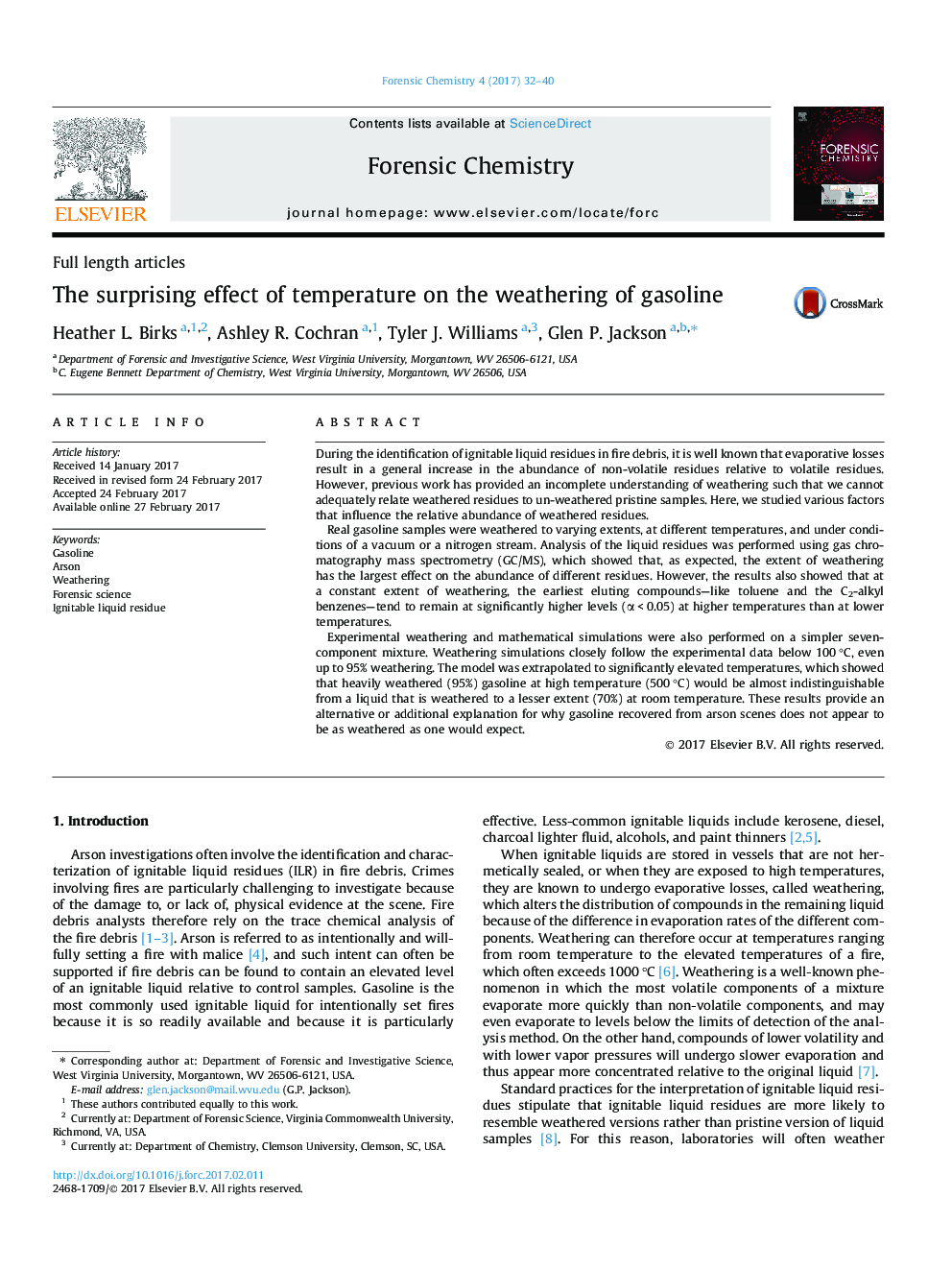| Article ID | Journal | Published Year | Pages | File Type |
|---|---|---|---|---|
| 6462021 | Forensic Chemistry | 2017 | 9 Pages |
â¢A new model to simulate the evaporation of a gasoline under different conditions.â¢Model includes the extent of weathering and the effect of temperature.â¢The extent (percent) of weathering has the largest effect on weathering.â¢When the extent of weathering is fixed, temperature has a significant impact on weathering.â¢Gasoline weathered 95% at 500 °C resembles gasoline weathered 70% at 25 °C.
During the identification of ignitable liquid residues in fire debris, it is well known that evaporative losses result in a general increase in the abundance of non-volatile residues relative to volatile residues. However, previous work has provided an incomplete understanding of weathering such that we cannot adequately relate weathered residues to un-weathered pristine samples. Here, we studied various factors that influence the relative abundance of weathered residues.Real gasoline samples were weathered to varying extents, at different temperatures, and under conditions of a vacuum or a nitrogen stream. Analysis of the liquid residues was performed using gas chromatography mass spectrometry (GC/MS), which showed that, as expected, the extent of weathering has the largest effect on the abundance of different residues. However, the results also showed that at a constant extent of weathering, the earliest eluting compounds-like toluene and the C2-alkyl benzenes-tend to remain at significantly higher levels (α < 0.05) at higher temperatures than at lower temperatures.Experimental weathering and mathematical simulations were also performed on a simpler seven-component mixture. Weathering simulations closely follow the experimental data below 100 °C, even up to 95% weathering. The model was extrapolated to significantly elevated temperatures, which showed that heavily weathered (95%) gasoline at high temperature (500 °C) would be almost indistinguishable from a liquid that is weathered to a lesser extent (70%) at room temperature. These results provide an alternative or additional explanation for why gasoline recovered from arson scenes does not appear to be as weathered as one would expect.
Graphical abstractDownload high-res image (122KB)Download full-size image
